Preparing Class 10 Economics Chapter 1 Development can be overwhelming, but with the right resources, you can feel confident and ready to succeed. This guide provides a list of important questions and answers that cover the key topics you'll need to know for your exam. Whether you're studying for the first time or reviewing before the big day, this guide can help you ace your exam.
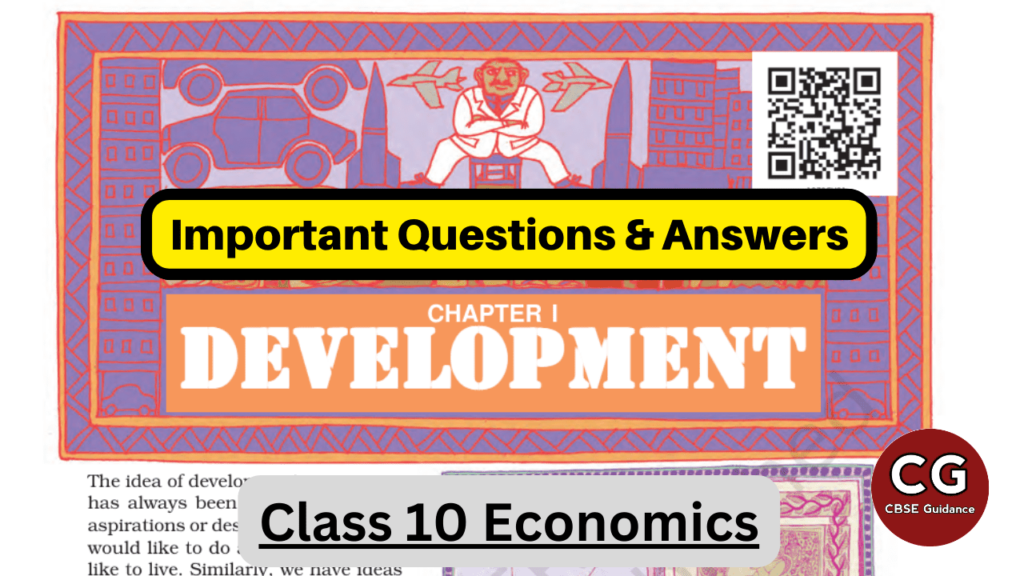
| Subject | Social Science (Economics) |
| Class | 10 |
| Board | CBSE and State Boards |
| Chapter No. | 1 |
| Chapter Name | Development |
| Type | Important Questions and Answers |
| Session | 2024-25 |
| Weightage | 4 marks |
"Don't let yesterday take up too much of today."
- Will Rogers
Development Class 10 Important Questions with Answers
Q. No. 1) Multiple Choice Questions (MCQs)
i. Look at the image given below.
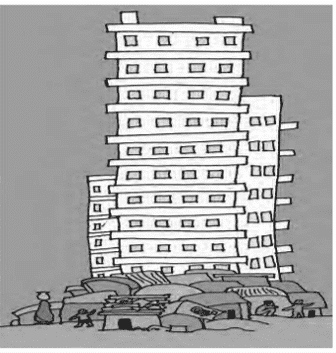
Which of the following goals of development should be prioritized in this region?
a. Reducing income disparities
b. Combatting climate change
c. Ending gender violence
d. Ensuring caste equality
Ans. Option (a)
ii. Which age group of children is included in calculating Net Attendance Ratio?
a. 14-15
b. 6-10
c. 7-11
d. 5-9
Ans. Option (a).
iii. Which one of the following is the correct meaning of ‘Average Income’?
a. The total income of the country divided by its earning population.
b. The total income of the country divided by its total population.
c. The total income of all the residents of the country.
d. The total income from domestic and foreign sources.
Ans. Option (b).
iv. Which of the following measures the population of the literate population in the seven and above age group?
a. Net attendance ratio
b. Enrolment ratio
c. Literacy rate
d. Drop out ratio
Ans. Option (c).
v. Read the given data and find out children of which state has attained maximum elementary school education?
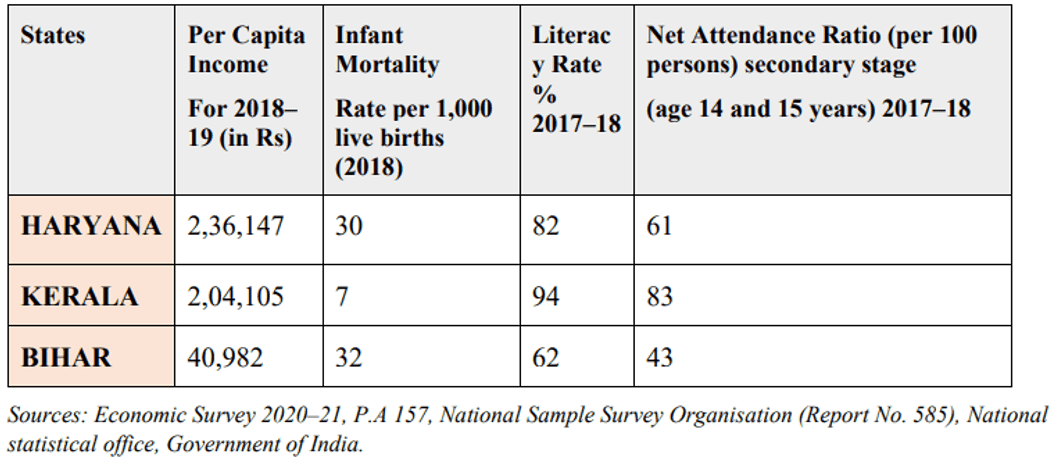
a. Haryana
b. Bihar
c. Haryana and Kerala both
d. Kerala
Ans. Option (d).
vi. Read the following data and select the appropriate option from the following.
| Educational Achievements of the Rural Population of Uttar Pradesh | ||
| Category | Male | Female |
| Literacy rate for the rural population | 76% | 54% |
| Literacy rate for rural children in the age group 10-14 years | 90% | 87% |
| Percentage of rural children aged 10-14 years attending school | 85% | 82% |
How much percentage of girls are not attending school?
a. 81%
b. 61%
c. 69%
d. 18%
Ans. Option (d).
vii. Which one of the following best describes the Human Development Index (HDI)?
a. Improvement in science, information, and technology
b. Improvement in health, education, and income
c. Improvement in information and communication
d. Improvement in investment, finance, and technology
Ans. Option (b).
viii. Absenteeism is one of the most basic indicators of to what extent the educational needs of students are met by schools. If the students are turning their back on the education they are provided, it means that we need to ask ourselves, “Is something happening in our schools and classrooms that distract students from education?”
The researchers are MOST LIKELY referring to the factors that affect ________.
a. Average income
b. Net attendance ratio
c. Public distribution system
d. Net state domestic product
Ans. Option (b).
ix. As of 2020, India is the 6th largest economy in the world but is ranked low in per capita income.
What can be the reason for this?
a. Low foreign investments
b. Low GDP growth rate
c. High mortality rate
d. High poverty
Ans. Option (d).
x. What Jawaharlal Nehru thought of as temples of independent India, i.e., dams, have already displaced 11 million Indians.
What is this an example of?
a. Conflicting developmental goals
b. Development of public facilities
c. Sustainable development
d. Human development
Ans. Option (a).
xi. Which of these statements about national development is TRUE?
a. Only countries with a varied population will have high national development.
b. Different development goals may be conflicting with a country’s development.
c. Any one attribute can be used to compare the national development of two countries.
d. National development can be measured by calculating the total income of the population.
Ans. Option (b).
xii. Two statements are given in the question below as Assertion (A) and Reason (R). Read the statements and choose the appropriate option.
Assertion (A): Human Development mentions how much socioeconomic development has happened in a country.
Reason (R): Comparison of the national income of two countries explains the Human Development Index.
a. Both A and R are true, and R is the correct explanation of A.
b. Both A and R are true, but R is not the correct explanation of A.
c. A is true but R is false.
d. A is false but R is true.
Ans. Option (c).
xiii. Assertion (A): Different people have different development goals.
Reason (R): People want freedom, equality, security, and respect.
a. Both A and R are true, and R is the correct explanation of A.
b. Both A and R are true, but R is not the correct explanation of A.
c. A is true but R is false.
d. A is false but R is true.
Ans. Option (a).
xiv. Vijay is undernourished as his weight is 45 kg and his height is 1.78 meters. Find out his Body Mass Index (BMI) from the following options.
a. 12.6
b. 13.5
c. 14.7
d. 15.2
Ans. Option (c). [BMI = Weight/Height2 = 45/(1.78)2 = 45/3.1684 = 14.20]
xv. Read the following data and information carefully and select the most appropriate answer from the given options:
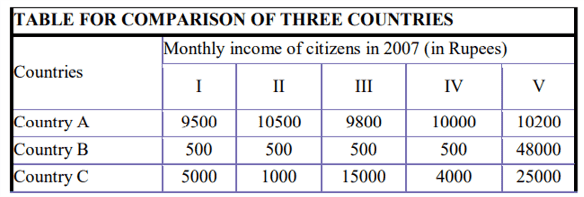
Rita is an employee of a multinational company who gets transferred to different countries after every three years of service. She has been given an opportunity to choose any one out of the three countries mentioned in the table above as her next job location. She calculates the average income of all these countries as per the given data and chooses to be transferred to Country A.
Identify the reason why Rita has chosen country A.
a. Most of its citizens are rich and stable.
b. Has the most equitable distribution of income.
c. National income of its citizens is higher.
d. Average income of its citizens is lower.
Ans. Option (b).
xvi. Read the given data and find out which country has the most equitable distribution of income.

a. Country A
b. Country B
c. Country C
d. Country D
Ans. Option (a).
xvii. Given below is the income distribution of two fictional countries, each with a population of 5 persons. Which of them would have a wide gap between the rich and poor?

a. Country P
b. Country Q
c. Both P and Q
d. Neither P nor Q
Ans. Option (d)
xviii. The literacy rate is highest in Kerala while the infant mortality rate is highest in Bihar. What does it show?
a. Most of the people in Kerala and Bihar have good living conditions.
b. Both Bihar and Kerala lack basic necessities of life.
c. The standard of living in Kerala is better than in Bihar.
d. The standard of living in Bihar is better than in Kerala.
Ans. Option (c).
xix. Assume there are four families in a country. The average per capita income of these families is Rs 5000. If the income of three families is Rs 4000, Rs 7000, and Rs 3000 respectively, what is the income of the fourth family?
a. Rs 7500
b. Rs 3000
c. Rs 2000
d. Rs 6000
Ans. Option (d).
xx. Read the given data and answer the following question.

Identify the country that MOST PROBABLY has a well-developed healthcare system but lesser average education than India.
a. Sri Lanka
b. Myanmar
c. Pakistan
d. Nepal
Ans. Option (d)
Q. No. 2) Fill in the blanks
- One of the best ways to reduce over usage of groundwater is ______.
- The number of deaths of children less than one year of age per 1000 live births is referred to as ______.
- The total number of children of age group 14 and 15 years attending school as a percentage of the total number of children in the same age group is referred to as ______.
- People may have different development goals. What is development for one, may even be ______ for the other.
Ans.
- Implementation of stringent policies to control misuse of water.
- Infant mortality rate (IMR)
- Net attendance ratio
- Destructive.
Q. No. 3) What is development? What are two aspects of development?
Ans. Development is such a situation that can fulfill the aspiration or desires of people. It is the progress or improvement in the lifestyle of the people.
Two aspects of development are:
- Different people can have different development goals.
- What may be development for one may not be development for others.
Q. No. 4) State any two goals of development other than income.
Ans. The two goals of development other than income are:
- freedom
- security.
Q. No. 5) Why do different people have different notions of development? Explain.
Ans. It is because the life situations of people are different. People see things that are most important for them or that can fulfill their aspirations or desires. For example, the development goal of a boy from a rich urban family would be to get admission to a reputed college whereas the development goal of a girl from a rich urban family would be to get as much freedom as her brother.
Q. No. 6) “Conflicting goals can be development goals.” Elaborate with examples.
Ans. At times two people or groups of people may seek things that are conflicting. A girl expects as much freedom and opportunity as her brother and he also shares in the household work. Her brother may not like this.
Similarly, to get more electricity, industrialists may want more dams but this may submerge the land and disturb the lives of people who are displaced, such as tribals.
Q. No. 7) Explain how the development goals and aspirations of landless rural laborers, prosperous farmers, and poor farmers who depend only on rain are different.
Ans.
- Landless rural laborers: They would like to have more days of work and better wages, and local schools to provide quality education to their children there should not be any social discrimination so that they too can become leaders in the village.
- Prosperous farmers: They should have an assurance of high family income through higher support prices for their crops through hardworking and cheap labor.
- Farmers who depend only on rain: This kind of farmer’s main goal is to have irrigational facilities, crop insurance at less premium, and water facilities of life for them as well as their children.
Q. No. 8) Give examples to prove that there are other important development goals than income.
Ans. Besides income, the development goals of various categories of people are different from person to person. Some examples of developmental goals other than income are:
- For rich farmers: High support price for crops, cheap labor, and subsidized inputs.
- For landless rural laborers: More days of work, schools for their children, and no social discrimination.
- For Adivasi: No social discrimination, year-round employment, school education for children, and PDS shop in his village.
- For urban youth: Opportunity for higher education, availability of an office job, and a self-owned house.
- For an urban girl from a rich family: Freedom to decide her profession and be able to pursue her higher studies abroad.
Q. No. 9) “Average income is an important criterion for development.” Justify.
Ans. To check the criteria for the development of countries, their income is considered to be one of the most important attributes.
- Countries with higher incomes are more developed than others with less income.
- This is based on the understanding that more income means more of all the things that human beings need.
Q. No. 10) “Money in your pocket may not buy all goods and services you need to live well.” Is it true or not? Elucidate.
Ans. Money in our pockets cannot buy all the goods and services that we may need to live well.
- Money cannot buy us a pollution-free environment.
- Money cannot buy us a disease-free life and might not be able to get protection from infectious diseases.
- Besides money, people also like to have equal treatment in society, freedom, dignity, and honor in their lives, which money cannot buy them.
Q. No. 11) “National development of a country depends on the availability of public facilities.” How?
Ans. Public facilities are those provided by the government instead of individuals or private sources. For this reason, they may be either highly subsidized or totally free of cost. They are important because many persons do not have enough income to be able to avail of facilities provided by the private sector resulting in difficulties faced like inadequate healthcare, poor nutrition, lack of education, etc. The utility of two public facilities available in India are:
- The public distribution system (PDS) provides fair average quality food grains and other essential items to the weaker section of the population at subsidized prices.
- Health care in government hospitals and dispensaries is provided to all at a subsidized rate. This includes outpatient as well as hospitalization facilities.
Q. No. 12) In what respects is the criterion used by the UNDP for measuring development different from the one used by World Bank?
Ans.
| UNDP's method of measuring development | World Bank's method of measuring development |
| i. UNDP compares on the basis of literacy rate, gross enrolment ratio, and health status of people. | i. World Bank compares on the basis of per capita income. |
| ii. It gives ranks to the countries according to their level of development. | ii. It divides the countries according to - Rich or high-income countries - Middle-income or developing countries - Poor or low-income countries |
| iii. It is a wider concept as it includes other things besides income. | iii. It is a narrow concept. |
Q. No. 13) What is the main norm used by the World Bank in classifying different countries as rich and poor countries? What are the restrictions of such norms?
Ans. The main norm used by the World Bank in classifying different countries as rich and poor countries is per capita income.
- Average income hides the disparity.
- Average income does not tell us the distribution of income among people.
- It is just a material criterion for the comparison.
Q. No. 14) Mention the formula to calculate the BMI (Body Mass Index).
Ans. Body mass index (BMI) is a person's weight in kilograms divided by the square of height in meters.
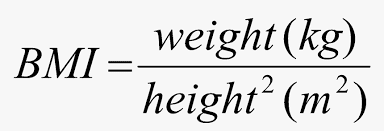
Q. No. 15) Sunita a 25 years old woman lived in a village. Her height is 1.45 m and her weight is 36 kg. While Nisha is of the same age and height, her weight is 48 kg. What can be said about their nutritional condition?
Ans. Sunita’s BMI = Weight/Height2 = 36/(1.45)2 = 36/2.1025 = 17.12 kg/m2. As per the table, Sunita is underweight.
Nisha's BMI = Weight/Height2 = 48/(1.45)2 = 48/2.1025 = 22.83 kg/m2. As per the table, Nisha is under the normal weight category.
Q. No. 16) What are the criteria used by the UNDP for classifying countries?
Or,
Explain the meaning of HDI. Mention three components of measuring HDI.
Ans. United Nations Development Programme has used the criterion of the Human Development Index to measure the development of countries. The human development index is a composite index of the achievements of a nation in terms of three important variables (longevity, knowledge, and standard of living, quality of life).
HDI is calculated on the basis of:
- Per capita income: It is calculated by dividing the total national income of a country by the total population.
- Life expectancy: It is the average expected length of life of a person at the time of birth in a country.
- Gross enrolment ratio for three levels: It means the enrolment ratio for primary schools, secondary schools, and higher education beyond the secondary level.
Q. No. 17) Gross Domestic Product (GDP) and Per Capita Income: India's GDP was USD 2.7 trillion in 2020, making it the world's sixth-largest economy. However, the per capita income in India is only about USD 1,947 per year, which is much lower than the world average of USD 11,570. This means that the overall economic output in India is high, but the benefits are not evenly distributed among the population.
Human Development Index (HDI): HDI is a composite index that measures the overall development of a country based on indicators such as life expectancy, education, and income. According to the United Nations Development Program (UNDP), India's HDI value in 2020 was 0.645, which is below the world average of 0.737.
This indicates that while India has made significant progress in improving human development indicators in recent years, there is still a long way to go.
(A) Why is India’s Per capita income low compared to the world average? Suggest any one measure to increase the Per capita income of India.
Ans. Rapid population growth directly affects per capita income in an economy. Rapid growth leads to the problem of allocation of scarce resources. The lack of education, healthcare, and employment opportunities lowers the income level of the citizens, which results in the low per capita income of the country.
(B) Mention any one measure to increase the Per capita income of India.
Ans. The per capita income of India may increase through the government’s investment in infrastructure, Education, and training. Greater education and job skills allow individuals to produce more goods and services, start businesses, and earn higher incomes
(C) Propose any two measures to be taken by India in improving its HDI.
Ans. Two measures to be taken by India to improve its HDI could be:
- Increase in budgetary allocation on education and healthcare facilities. India needs to focus on improving access to healthcare services, especially in rural areas. This could involve building more hospitals and clinics, training more healthcare workers, and implementing policies to reduce the cost of healthcare. Subsidies can be channelized towards the generation of more employment opportunities.
- Investing in education: India needs to invest in education to improve its human capital. This could involve increasing the number of schools and colleges, providing better teacher training, and implementing policies to ensure that all children have access to education. Additionally, there needs to be a focus on improving the quality of education to ensure that students are gaining the skills they need to succeed in the workforce.
Q. No. 18) “The issue of sustainability is important for development.” Examine the statement.
Ans.
- Sustainable development aims at fulfilling the needs of today without compromising the needs of the future generation.
- Sustainability is the capability to use resources judiciously and maintain the ecological balance.
- It lays emphasis on environmental protection and checks environmental degradation.
Q. No. 19) How is the issue of sustainability important for development? Explain with three examples.
Or,
‘We have not inherited the world from our forefathers – we have borrowed it from our children.’ explain the above statement with an example.
Ans. Development, at present, without harming the environment and also keeping it safe for future generations is termed sustainable development.
- Groundwater, which is a renewable resource, is getting depleted because of its overuse. People are facing the problem of a water crisis due to its indiscriminate use.
- The development that emerged from the fast industrialization leads to the cutting of forests and its result is a polluted- environment for the present as well as for future generations.
- Crude oil which is a non-renewable resource with limited stock is depleting gradually. So we need to use it wisely.
Q. No. 20) Find out the present sources of energy that are used by the people in India.
Ans. The present sources of energy that are used by the people of India are:
- Electricity
- Coal
- Crude oil
- Cow dung
- Solar energy.
Q. No. 21) Why does Kerala have a better Human Development Index ranking in comparison to Punjab? Explain with three reasons.
Ans. Kerala has a better Human Development Index ranking in comparison to Punjab.
The three reasons are:
- Kerala has better provisions of health facilities and therefore the IMR in Kerala is very low.
- Kerala has better educational facilities. Therefore, the literacy rate is high there and the net attendance ratio is also high.
- Kerala has better provisions for PDS.
| Must Read: Development Class 10 Notes |
Hope you liked these Questions and Answers on Development Class 10 Economics. Please share this with your friends and do comment if you have any doubts/suggestions to share.
SST ko jo aur chapter bacha hai …uska bhi important questions upload kar digiye …sir plz….kewal aap ki ..wajah se mere tayari .. acchi chal rahi hai
………THANKYOU SIR JI 🙏🙏🙏
Haa hum ispe work kar rahe hai…
Sir kya ye question kaffi rhenge board exam ki tyari krne ke liya
Kya inn questions me sbb cover hogya ?
Sir please tell me
I want to know …
I really need ur help
Haa inn questions ko ache se prepare karlo.
Sir could you please check the answer of question number:
1)xiii , I think the answer is option (c)
Yes you are correct. I have changed it.
Sir plz explain (xvii) MCQ
I can’t understand why country P is the answer……
Plz sir reply fast
Check now…
Ok sir